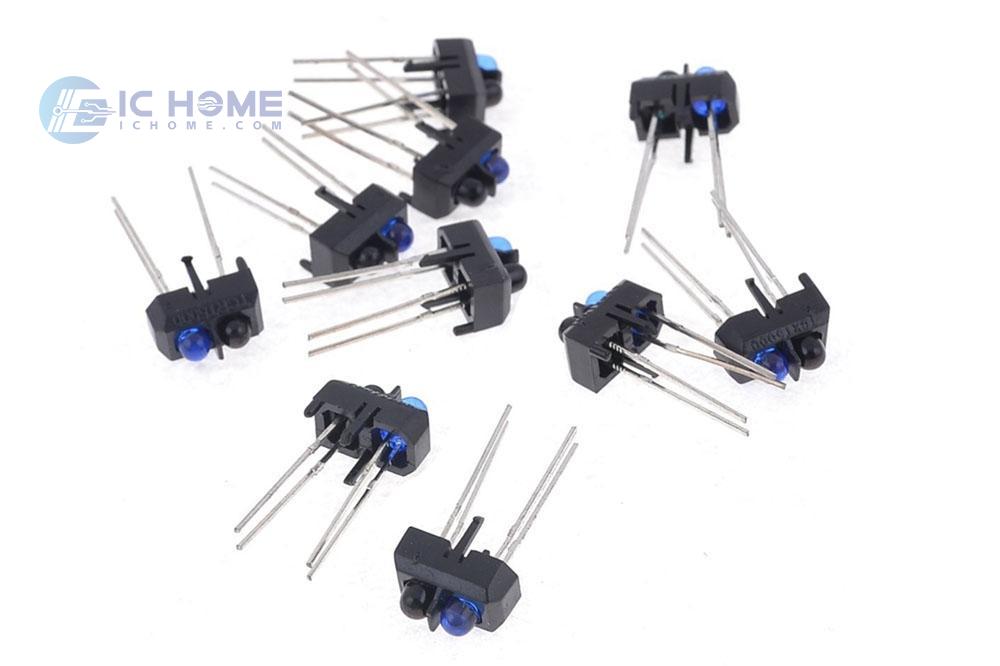Understanding the Wavelength of Light Sources in Reflective Optical Switches
Reflective optical switches are an essential component in many modern electronic and optical systems. They use light to detect the presence or absence of objects, making them highly valuable in industrial automation, consumer electronics, and more. But for engineers, procurement professionals, and electronics enthusiasts, one key question often arises: What is the wavelength of the light source used in a reflective optical switch? Let’s explore the science behind reflective optical switches, typical wavelengths used, and their practical implications.

How Do Reflective Optical Switches Work?
Reflective optical switches operate based on the principle of light reflection. They typically consist of a light emitter (such as an LED) and a photodetector. Here’s how they work:
Emission of Light: The light source emits a beam of light, often in the infrared (IR) spectrum.
Reflection: When an object enters the detection range, the emitted light reflects off the object’s surface.
Detection: The photodetector captures the reflected light, signaling the presence of the object.
This simple yet effective mechanism makes reflective optical switches highly reliable for non-contact detection.
Typical Wavelengths Used in Reflective Optical Switches
The wavelength of the light source in a reflective optical switch is a critical factor that determines its functionality and application. While the specific wavelength can vary, the following are most commonly used:
Infrared (IR): 850 nm to 950 nm
Infrared light sources are the most popular choice for reflective optical switches. Here’s why:
Low Interference: IR wavelengths are less likely to interfere with visible light sources in the environment.
High Sensitivity: IR light offers excellent reflectivity across a wide range of materials, ensuring reliable detection.
Energy Efficiency: IR LEDs are efficient and provide a long operating lifespan.
Visible Red: 630 nm to 670 nm
Some reflective optical switches use visible red light sources. These are particularly advantageous in applications requiring visible alignment or diagnostics. For example:
Visual Confirmation: The bright red light allows users to easily see where the beam is directed.
Precise Adjustment: In engineering applications, visible light simplifies calibration and setup.
Ultraviolet (UV): Below 400 nm
Though less common, ultraviolet light is used in specialized applications, such as detecting specific materials or surface conditions. UV light has:
High Precision: Ideal for detecting fine particles or transparent materials.
Specialized Use Cases: Used in niche industries like semiconductor manufacturing or biochemical analysis.
Factors Affecting Wavelength Choice
Selecting the right wavelength for a reflective optical switch depends on several factors, including:
Material Properties: Different materials reflect light differently. For instance, shiny metals reflect infrared light well, while certain plastics may require visible or UV light.
Environmental Conditions: Infrared light performs well in low-light or dusty environments, whereas visible light may struggle in such conditions.
Application Requirements: Applications demanding high precision may lean towards shorter wavelengths (e.g., UV), while general-purpose switches often use infrared.
Practical Implications of Wavelength Selection
Understanding the wavelength of the light source in reflective optical switches helps users optimize their performance. Here are some practical considerations:
Improved Compatibility
Knowing the wavelength ensures the switch is compatible with the target object’s surface properties. For instance, highly reflective objects like mirrors may require IR light to avoid saturation of the photodetector.
Reduced Interference
In industrial environments with multiple light sources, choosing a wavelength that minimizes interference can significantly enhance detection reliability.
Enhanced Efficiency
Selecting the appropriate wavelength reduces power consumption and prolongs the lifespan of the optical switch, particularly in battery-operated systems.
Conclusion
The wavelength of the light source in a reflective optical switch is more than a technical specification; it is a key factor influencing performance, reliability, and application compatibility. While infrared wavelengths (850 nm to 950 nm) dominate due to their versatility and efficiency, visible and ultraviolet light sources also serve specialized purposes. By understanding these aspects, engineers and procurement professionals can make informed decisions, ensuring the best performance for their specific applications.
Whether you’re a seasoned professional or a newcomer to the electronics industry, the wavelength of light in reflective optical switches offers fascinating insights into how these small components achieve big results. With this knowledge, you’re better equipped to select the right solution for your needs.
For more information or to request a quote, please feel free to send us an RFQ.
Some Model Numbers




